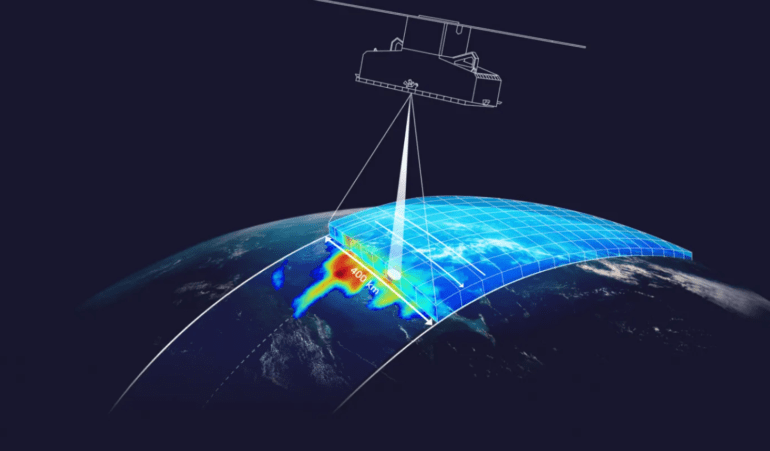TL;DR:
- Tomorrow.io’s radar satellites, driven by machine learning, compete with larger, traditional forecasting technology.
- The company’s innovative approach offers a promising solution to complex weather prediction challenges.
- Their compact satellites, using the Ka-band exclusively, match the performance of heavier counterparts like NASA’s GPM.
- Machine learning models enable accurate predictions even with a single radar band.
- Tomorrow.io aims to establish a global network of more capable satellites for comprehensive weather analysis.
- The company is committed to real-time global precipitation data and data-driven enhancements.
- Tomorrow.io plans to accelerate satellite launches to expand its data repository.
Main AI News:
In the world of meteorology, accuracy and precision are paramount, and Tomorrow.io is on the cutting edge of transforming weather forecasting and analysis. Harnessing the power of machine learning, Tomorrow.io has unveiled the remarkable capabilities of its first two radar satellites, marking a significant leap forward in weather prediction technology.
The journey to this milestone began when Tomorrow.io was known as ClimaCell back in 2021. After meticulous planning and development, the company has unveiled its innovative radar satellite system, poised to rival traditional forecasting technologies both on Earth and in orbit. The groundbreaking results of this endeavor, presented at a forthcoming meteorology conference, demonstrate the prowess of Tomorrow.io’s high-tech approach.
The intricacies of weather prediction hinge on a delicate balance between legacy hardware, such as radar networks and older satellites, and modern software solutions. While the existing infrastructure holds immense power and value, optimizing its output demands substantial computational efforts, and eventually reaches a point of diminishing returns.
However, Tomorrow.io has risen to this challenge with an ingenious space-based radar infrastructure. In contrast to the bulky and weighty satellites like NASA’s Global Precipitation Measurement (GPM) satellite, which weighs a staggering 3,850 kilograms, Tomorrow.io’s approach is sleek and agile. The two satellites, Tomorrow R1 and R2, launched in April and June of the previous year, have undergone extensive testing and are now showcasing their capabilities.
In an upcoming journal publication, Tomorrow.io intends to reveal the results of a series of experiments demonstrating that their compact satellites, weighing only 85 kilograms each and utilizing the Ka-band exclusively, can rival the performance of NASA’s GPM and ground-based systems. Across various tasks, the R1 and R2 satellites have proven their ability to deliver equally accurate or even superior predictions and observations when compared to GPM. Furthermore, their results closely align with ground radar data.
The secret to their success lies in a machine learning model that serves as a dual-purpose instrument. Trained on data from both of GPM’s radars, this model has learned to predict precipitation by analyzing the relationship between observations and the discrepancy between two radar signals. Remarkably, it can accomplish this feat using just one radar band, even when the Ka-band reflectivity is obscured by heavy precipitation.
Tomorrow.io’s achievement is substantial, yet it is not aimed at replacing the U.S. infrastructure. GPM and the ground radar network remain indispensable assets. The true challenge lies in extending this level of detailed prediction and analysis to the global scale, which is precisely what Tomorrow.io aspires to achieve. With eight planned production satellites, each larger and more capable at around 300 kilograms, the company aims to create a network that can provide comprehensive weather data worldwide.
According to Chief Weather Officer Arun Chowla, Tomorrow.io’s ultimate goal is to offer real-time precipitation data anywhere on the planet, revolutionizing the field of weather forecasting. They are committed to enhancing accuracy, global availability, and reducing latency to ensure that their data becomes an integral part of weather forecasting products.
In addition to its satellite network, Tomorrow.io is embarking on a data-centric journey, accumulating a vast repository of orbital radar imagery to enhance its own and other systems. This ambitious endeavor will require an accelerated pace of satellite launches throughout the year, solidifying Tomorrow.io’s position as a frontrunner in the future of weather forecasting.

Examples of data from the R1 and R2 satellites. Source: Tomorrow.io
Conclusion:
Tomorrow.io’s breakthrough in weather forecasting, powered by machine learning and agile radar satellites, marks a significant stride in the market. This innovative approach promises more accurate and timely weather predictions on a global scale, positioning Tomorrow.io as a frontrunner in the future of meteorology. The company’s commitment to real-time data and enhanced capabilities will likely shape the landscape of weather forecasting, offering valuable insights to industries and governments worldwide.

